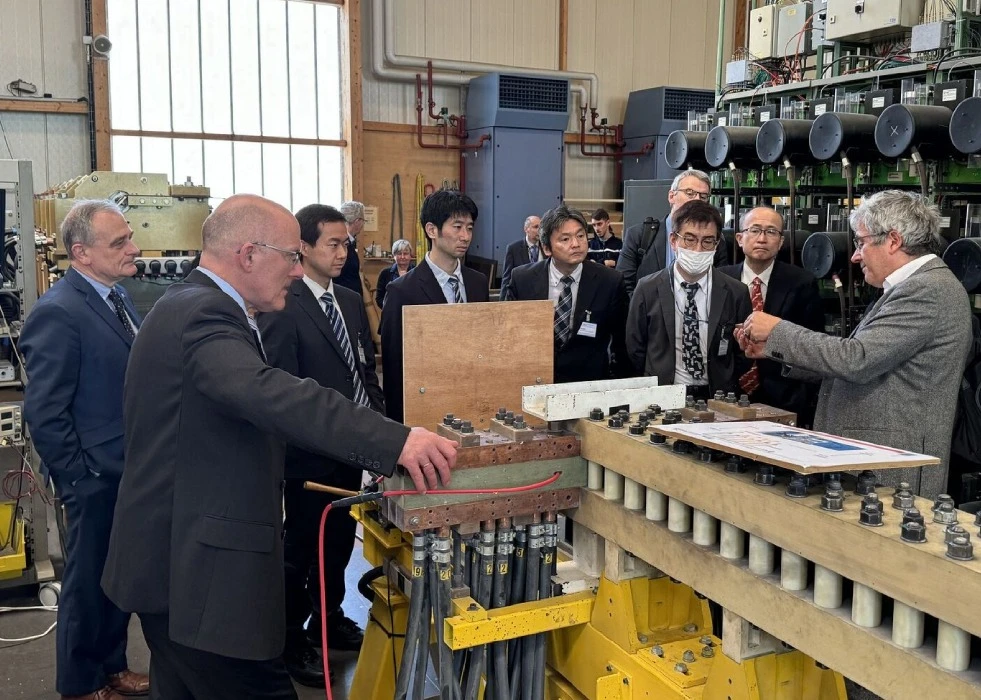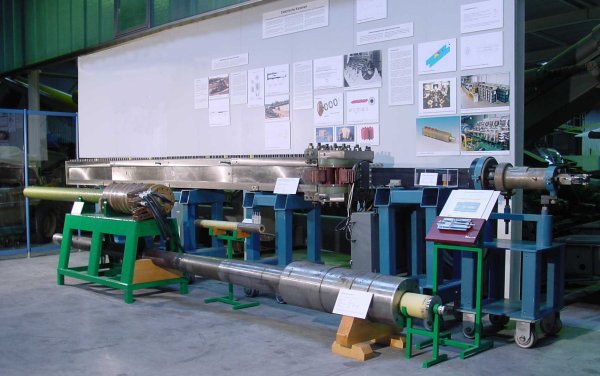
日本軌道炮:與德國、法國聯合研究
・與德國、法國國防部和聖路易斯研究所的合作
・ISL正在開發25毫米軌道炮(RAFIRA)
我們將提供汽車新聞中發表的文章摘要。

Acquisition, Technology and Logistics Agency
On May 30, 2024, the “Implementation Guidelines for Cooperation in Railgun Technology” were signed with the defense authorities of France and Germany.
1. To facilitate the sharing of information and exchange of opinions on railgun technology.
2. The purpose is to consider the possibility of collaboration between Japan, France, and Germany.
The Ministry of Defense will utilize the implementation guidelines and work on research and development toward the early practical application of railguns.

Acquisition, Technology and Logistics Agency of Japan:
1. Research on railguns will continue in the defense force development plan.
2. 23.6 billion yen has been allocated for research expenses in the FY2024 budget.

Railgun development in Japan:
A railgun is an “electromagnetic cannon” that fires bullets using electrical energy.
1. Compared to conventional guns that use gunpowder, the initial velocity of the bullet is greatly improved.
2. The bullet is small, which has the advantage of being difficult to detect.
Applications of railguns:
3. To deal with “hypersonic guided missiles” that are difficult to defend against with conventional weapons.
4. To be used as a counterattack against ships and ground targets that are difficult to avoid.
First, data on small calibers will be obtained. After that, medium calibers will be developed.
https://news.yahoo.co.jp/articles/c7930e2426899772b531e5dad1d7b2a6ac0ba87d
Ministry of Defense and Self-Defense Forces: Implementation Guidelines for Cooperation on Railgun Technology
Ministry of Defense,
French Ministry of Defense,
German Federal Ministry of Defense
Franco-German Saint-Louis Institute
On May 30, the “Implementation Guidelines for Cooperation on Railgun Technology” were signed.
Implementation of railgun technology cooperation:
To facilitate the exchange of information and opinions on railgun technology between participating organizations
1. The possibility of collaboration will be explored in railgun technology research, development, testing, and evaluation.
2. By utilizing these implementation guidelines, the Ministry of Defense will strengthen Japan’s defense capabilities.
https://www.mod.go.jp/j/approach/exchange/area/2024/20240530_fra_deu-j.html

Japan Joins :Germany and France for Railgun Development
from TURDEF
Acquisition, Technology & Logistics Agency (ATLA) of Japan:
ATLA has joined the French-German consortium to develop railguns.
This marks another new instance of Japan joining a multi-national high-technology weapon system programme after the well-known GCAP fighter programme.
The trilateral agreement:
will allow countries to unite their technology on power sources, railguns and hypersonic projectiles.

France and Germany:
working on railguns through the Research Institute of Saint-Louis (ISL).
ISL is developing:
The prototype is intended to serve as a test model for research into using railguns as air defence weapons.
1.a 25 mm railgun prototype named RAFIRA with the capability to fire five rounds in a single salvo.
2.The railgun will be capable of accelerating 100 gr projectiles roughly to a speed of Mach 7.35.

Japan tested a prototype:
1.a JMSDF ship’s deck in October 2023, with the round reaching a speed of Mach 6.5. In August 2023,
2.23.8 billion ¥ (About $ 164.3 million) was requested to continue railgun development.
Japan’s idea:
an operational railgun is an artillery system capable of hitting surface and air targets with airburst ammunition to serve the navy and army.

Most countries developing railguns:
1. a velocity goal for operational systems between Mach 6-8.
2.This will allow both a more extended range and increased lethality.
Projectiles at hypersonic speeds excel against hardened targets like bunkers and warships.

Due to high energy requirements:
for the time being, there isn’t a pressure to introduce the railguns operationally.
Aside from energy requirements:
mechanical issues such as friction and heating due to the extreme speeds of railgun components are also present.
https://turdef.com/article/japan-joins-germany-and-france-for-railgun-development
China’s :Hypersonic Rail Gun Test Fails!
-As It Looked To Launch Smart Bomb Into Stratosphere-
from Eurasiantimes Reports

The Chinese navy:
It recently conducted a test of an electromagnetic rail gun, launching a precision-guided munition into the stratosphere at hypersonic speed.
a test of an electromagnetic rail gun:
involved firing a smart bomb to a height of 15 kilometers into the stratosphere at a speed surpassing Mach 5, or five times the speed of sound.
the experiment was unsuccessful:
Despite the initial excitement over the successful launch, the experiment was later deemed unsuccessful.
The Chinese media report said:
the projectile did not follow the anticipated trajectory, and both the maximum range and altitude fell short of design values.
identified a critical issue:
Upon analyzing data transmitted back to the ground by the smart bomb,
Lu’s team identified a critical issue:
the projectile was rotating too rapidly during its ascent, causing an unintended tilt.

This discovery led to the realization of a technical hurdle:
known as “rotational speed latching,” which posed a significant challenge to the practical application of rail guns.
Further complicating matters
external protrusions on the projectile, such as gliding wings and tail rudders, which can undergo deformations during launch.
These deformations, though minor, can have major implications for aerodynamic stability, particularly in hypersonic environments.
https://www.eurasiantimes.com/new-china-fires-smart-bomb-into-stratosphere/